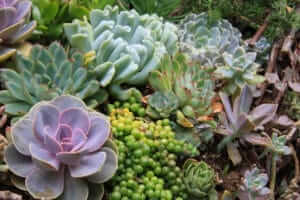The landscaping technique of xeriscaping has become more and more popular as people grow more aware of the environment and seek ways to keep it healthy. This type of gardening uses very little water and utilizes plants that can thrive in drought conditions.
What is Xeriscaping?
The word comes from Greek word xeros, which means dry and from the word landscaping. The technique not surprisingly originated in the 1980s in the southwestern part of the United States but has spread to other parts of the country. Gardeners use several guidelines to create a xeriscaped garden. They are:
- Select the right plants. Though most of the plants in this type of a garden should tolerate drought, the gardener can add a water demanding species or two as long as they are planted together.
- Zone the plants. This not only means that the plants are drought tolerant but that they have similar needs for sunlight and thrive in the same hardiness zones.
- Plan the garden in detail, and take the climatic conditions into consideration during every stage of the planning.
- Analyze the soil of the garden, and add amendments to help it better retain water.
- When it is time to irrigate the garden, irrigate it efficiently.
- Use mulch to help the soil retain water, and keep cool. Mulch also keeps down the weeds.
- Adopt practices that help the garden conserve water, including high mowing of any turf grass and assiduous weeding.
Why Xeriscape?
Even a garden that does not employ this landscaping technique can benefit from judicious watering. Overwatering causes plants to grow excessively, which increases their need for fertilizer. A xeriscaped garden keeps the need for fertilizer down and prevents the plant from developing the soft, saturated tissue that invites disease and pests. This reduces the needs for pesticides. Weeds are suppressed because any water is targeted specifically at the ornamental plants and not the entire space. The seeds of weeds that fall into soil that is kept moist germinate more readily than in soil that is dry.
Because the plants have been carefully picked to grow in the particular hardiness zone, they tend to be healthier, stronger and produce more beautiful flowers. They also tend to bear up well under the summer’s heat when more conventional gardens tend to look defeated.
Plants for Xeriscaping

Plants that are excellent for a xeriscaped garden include
- Russian sage – This is a perennial that grows to three or four feet tall. It is fragrant and adds soft shades of green and blue to the garden.
- Most succulents – These plants don’t need a lot of watering because they retain water in their leaves and sometimes in their roots. They include such plants as cacti, aloe, agave, and yucca. Many do quite well in the Oregon climate!
- Cotoneaster – This is a shrub that is related to the rose. It grows from two to three feet tall with a three to six-foot spread. It produces pink flowers from May to June, has lovely fall color and red berries that are attractive to birds.
For more information on how to xeriscape your garden, give us a call at Hilton Landscape Supply at 541-664-3374.
